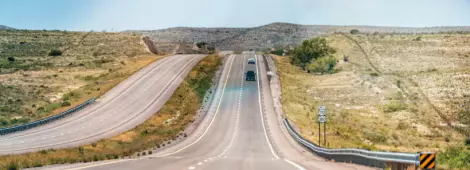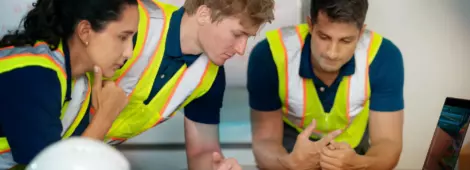
Urgent Evacuations: Applying Lessons Learned to Your Plans
by Paul McManus and David Hood
2024 marked a historic year for severe weather events in the U.S. There were more flash flood emergencies than any other year on record, and the second-highest number of tornadoes since record keeping began. Wildfires burned nearly nine million acres, and there were 27 individual billion-dollar weather and climate-related disasters. These disasters had a wide range of impacts on healthcare organizations, but perhaps none as consequential as those resulting in the urgent evacuations of healthcare facilities.
While hospital and nursing home evacuations are certainly not unprecedented, many evacuations in 2024 were unique due to the limited time available to prepare. In numerous cases, evacuations began with little warning and were conducted with great haste. It often was not feasible to implement preplanned full-building evacuation procedures. These procedures generally include key components such as recalling off-duty staff, phased patient movement, establishing triage or holding areas, coordinating and dispatching transportation assets and detailed patient tracking.
When a fire is approaching or flood waters are quickly rising, traditional evacuation plans are less effective. However, we have the benefit of learning from the organizations and individuals who have experienced hastened emergency evacuations in the past. Below are key lessons learned that should be considered in your emergency preparedness planning:
- Transportation: You may not have time to wait for external transportation resources to arrive. The reality is that employees may end up transporting patients or residents in their personal vehicles. While not ideal, it may be necessary. Additionally, where vehicles, wheelchair vans and ambulances are available, it may be necessary to bunch or stack patients beyond normally accepted practices and procedures.
- Tracking: Many facilities utilize varying technology systems to manage patient tracking. However, these systems often depend on electricity, internet access and time-consuming data input. In an urgent evacuation scenario, organizations should have a quick and simplistic method to manage patient tracking. This can be accomplished via hardcopy tracking forms that accompany patients as they leave a unit or building. In extreme situations, tracking may be limited to wristbands or even writing identifying information directly on the individual’s skin with a marker.
- Evacuation Sites: The ideal evacuation site is one that can provide comparable care, but that may not be an option during certain emergencies. Hospitals should be prepared to quickly triage patients with the understanding that lower-acuity patients may need to temporarily be sent to an alternate care site other than a hospital. This could include locations such as surgery centers and nursing homes. Long-term care facilities may be forced to evacuate to a stop-over location. These are generally buildings such as firehouse community rooms, school gymnasiums and church halls. From these locations, residents can be triaged, tracked and moved to other long-term care facilities as time and conditions permit. Predetermining where to go and how to assemble the personnel and equipment necessary to provide care in a temporary location is an important part of urgent evacuation planning.
Like all comprehensive emergency planning, maintaining procedures is just part of the equation. Planning should be coupled with effective education and realistic exercising.

Paul has been with Jensen Hughes since 2003 after spending more than twenty-five years in healthcare security and fifteen years in the fire services. Prior to joining Jensen Hughes, Paul managed safety and security in a large acute care…

Dave is a past Chairman of the National Fire Protection Association (NFPA) Health Care Section Executive Board. He currently serves as the Chair of the Health Care Section Education Committee. He was a long-time member of the NFPA 101…












